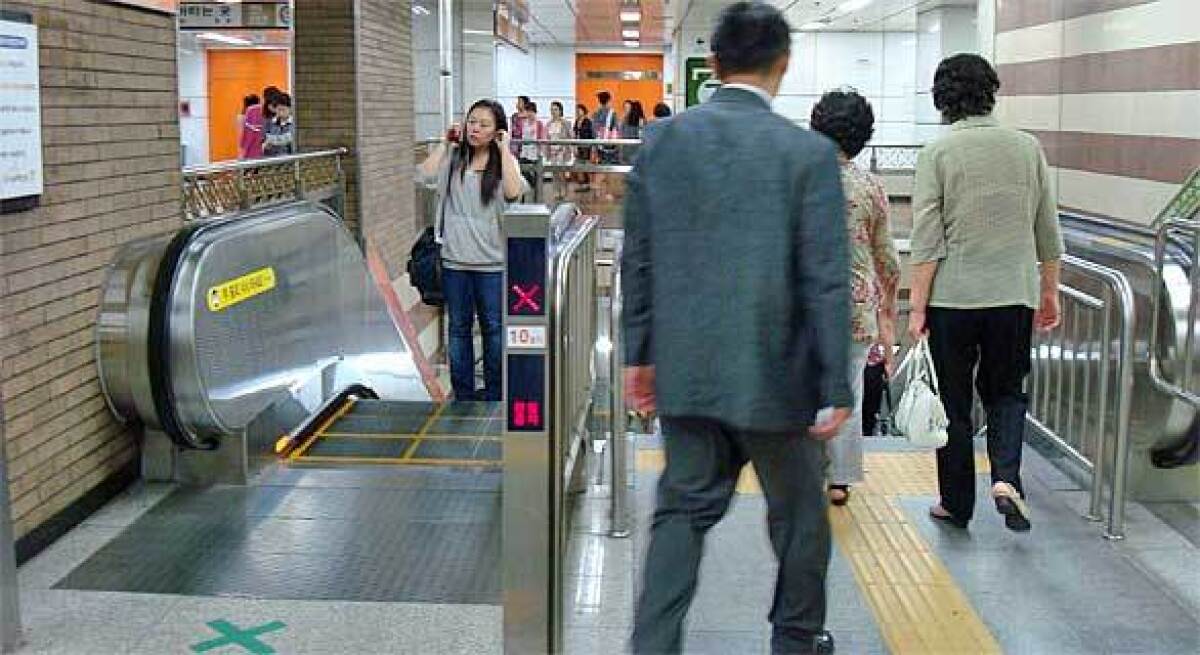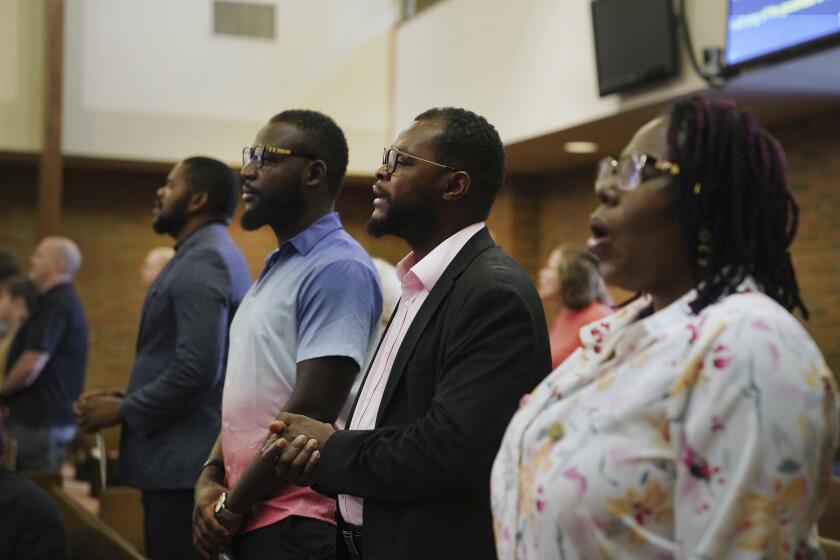South Koreans do the ‘right’ thing

Lee Young-soo sees a social revolution happening before his eyes: South Korea’s fundamental shift to the right, a move that has many here fretting about a looming collision.
It’s not politics they’re talking about, but walking in public.
As he hurries through the chaotic pedestrian flow at a local subway station, Lee moves instinctively left to take the down escalator toward his train -- only to see the mass of commuters rising toward him.
Narrowly missing slamming into someone, he scurries over to the right side and joins the others moving down.
“For a while,” says the 48-year-old, “this might be uncomfortable.”
A new government campaign is bucking the “stay left” law in force here for decades, forcing pedestrians on escalators and moving walkways in the city’s massive subway system to move to the right.
The direction of Lee’s escalator was recently reversed, and in coming weeks, hundreds, if not thousands, more will follow as the plan is introduced to the rest of the nation.
Officials say the move makes perfect sense -- falling into line with international practice and increasing the pedestrian flow, presumably by cutting down on collisions. And because nearly 90% of South Koreans are right-handed and the country drives on the right, keeping left goes against instincts, they say.
“Our country is the one that started all the trouble by initially forcing people to walk in a certain direction,” said Hwang Duk-soo, head of the National Movement of Keeping Right.
“In the past, when Koreans go abroad, they hit foreigners. And vice versa, foreigners come to Korea and bump into Koreans.”
Hwang has become a bit of a philosopher when it comes to bodies in motion. He’s done his research.
In 1921, during the Japanese occupation, South Korea required both pedestrians and cars to stay left -- following the custom that still exists throughout Japan. Then, in 1946, under the U.S. military administration after World War II, South Korea moved vehicles to the right but left pedestrians where they were.
Sociologists say the latest changeover won’t be smooth.
“It could take a bit of trial and error since the custom that we have used is going to be thrown away,” said Gihong Yi, a sociology professor at Hallym University. “There could be some repercussions. However, walking on the right has been proved good in a sense of human engineering.”
Such elemental shifts have been going on elsewhere in Asia and the Pacific. This month, the island nation of Samoa switched from driving on the right. Contrary to official fears, chaos did not ensue.
At the Express Bus Terminal in Seoul, which made the switch with escalators and walkways before the program’s official kickoff next month, some people are worried.
“It sounds good,” said Jin Ho-jun, 68, a former banker. “However, I am worried because many elders who are used to the old way use subways so often.”
Seoul transportation officials are gearing up for the official switch starting Oct. 1, when they will have hundreds of volunteers during congested rush hours at 163 subway stations citywide.
Many stations have already been papered with promotional posters showing a smiling, happy family and reading: “Keep to the right! You are beautiful for taking part.”
The Korea Transport Institute expects that the move will eventually increase walking speed within the subway system and reduce pedestrian collisions by as much as 25%.
Officials say offenders against the new system will not face fines but will be encouraged to go with the flow.
To make the crossover run more smoothly, Koreans need to be patient, advocates say. “Critics should know that nothing is perfect. The one is just better than the other one,” Hwang said.
Still, he can’t hide the philosopher within him.
“Technically, no one should tell us to walk to the left or to the right,” he said. “It is much easier to just go with instinct.”
Park is in The Times’ Seoul Bureau.
More to Read
Sign up for Essential California
The most important California stories and recommendations in your inbox every morning.
You may occasionally receive promotional content from the Los Angeles Times.











